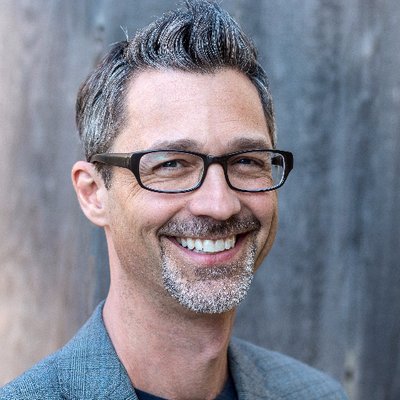June 14, 2018
DesignOps at Autodesk

Michael
Polivka
Director, Global Design Operations & Communications
Autodesk
With Michael Polivka — Director, Global Design Operations & Communications at Autodesk.
In your own terms, at a high level, how do you define or think about “DesignOps”?
First, I need to say that “design operations” isn’t anything new. It’s the latest and hottest title for design management to have come along in a while. The practice has been around since the inception of broadcast and print production and has flourished in advertising and marketing agencies for decades. But it’s 2018, and design management is new to many corporations — particularly those employing product designers.
Design operations is an ecosystem that allows designers to do great work. On one side, this is about shielding designers from operational activities that oftentimes pull them away from doing their ‘real work’. On the other side, it’s about coaching designers into leadership roles beyond the comfort of their laptops and headphones out into the company at large.
We in design operations lead people and programs in the advancement of effective and rewarding design teams. Inwardly, this involves leading organizational design, career path development, performance reviews, OKRs, group collaboration, budget, the narrative of design, and the like; the business of design. Outwardly, it involves helping designers more clearly understand the business needs upon them while simultaneously getting their cross-departmental peers (particularly PMs and engineers) to understand and value the broad-spectrum of design so new ways of working together can be recognized and take root.
Our practice is part art and part science; part technical development and part people development; part collaboration and part innovation; part reactive and part proactive.
What was the tipping point for you, where you realised this was something that was required and beneficial in your team/company? Was there anything that made you take notice and decide to venture down this DesignOps path? Or any early wins that made you pursue it further?
I was an interactive designer, years ago, when my boss realized my potential for organizing teams toward successful project delivery. Before long, my title was changed to Producer and I was responsible for bringing the whole team together to a common goal, over and over again. To me it was simply a new form of problem solving focused on teamwork, and my design background came in handy in my approach (which is now widely known as ‘design thinking’).
However, I didn’t have any formal management or leadership training whatsoever at the time; I went to an art and design college, and project management wasn’t an offering. So, I took it upon myself to close the gap. I started reading about the art of leadership, the power of relationships, and ways of managing money, resources, and timelines. I learned to geek-out in Excel, and at a Macworld event in San Francisco I learned about Microsoft Project — which became my go-to gantt chart tool. My path since then has been evolutionary, and I’ve had the pleasure of building and leading teams and agencies with a solid backbone in design management.
I’m actually looking for my next career opportunity. I was one of 1,500 recently laid off from Autodesk, which included the dissolution of our global design practice team. If anyone reading this knows of any amazing design leadership opportunities in the San Francisco Bay Area, please let me know.
How does DesignOps effect the efficiency/effectiveness of your day-to-day operations in the team as a whole, and more specifically in the design team? Where have you noticed the most improvements? (ie. Speed of work, frictionless of handovers, happiness of employees, quality/consistency of work etc).
Communication is the first area I focus on when reviewing design operations of a group. When communication is optimal, leadership can share its vision with the team, the team can share work and ideas with each other, and the designers can also communicate a variety of topics up to leadership in a transparent way. It’s critical to get this working well because it’s the foundation for all other activities, including a strong design community and culture.
A common toolkit, processes, and methods of operating are important as well—especially in an environment where resources are shared such as a studio or centralized design environment. This allows for a seamless transition of team members across a wide variety of assignments. It also allows for cohesive design through interoperability of file types and formats from one designer to the next. The right tools and processes can also connect designers more meaningfully to their counterparts in engineering and PM.
Design operations leaders are also responsible for defining and broadcasting the goals, outcomes, and achievements of the design team so their value can be easily understood across the entire organization. Demonstrating impact is good for the morale of the design team and essential for educating the company at large on the ROI that designers provide.
All of these sorts of things can improve the speed, quality, and effectiveness of the work being created in the design organization. Plus, it supports a hive mentality in which every designer is a key player in making things happen in service of the highest goals of the company — which I believe makes for a happier and more desirable design culture.
What does the tooling and flow/process look like for your design team (and development team - if applicable)?
Most recently at Autodesk, as the director of design operations and communications, I was responsible for leading a new tool rollout across the de-centralized design organization. Mostly starting from scratch, I worked with a great taskforce of employee volunteers that I curated to conduct research with our designers, make recommendations to our executives, and ultimately introduce a modern tool pipeline to the company focused on web and mobile products.
This concluded in large-scale license agreements with Sketch (for design), Abstract (for version control), and InVision and Craft plug-in (for prototyping and collaboration) - which enabled a smoother hand-off to engineers using InVision Inspector and then into Jira for stakeholders.
I was really hoping that Adobe would have been in consideration because of how many designers were already using Creative Cloud, and actually held off on my recommendation for some time on InVision as the core platform in hopes that Adobe XD would be mature enough to adopt. However, it never happened.
What resources or influences have had the most impact on the way you approach your day to day operations in the DesignOps space? (This could be other companies, books, podcasts, articles, talks etc).
I like to learn about all sorts of systems and how they operate, either in nature or in man-made environments. This is my highest source of inspiration. Things such as colonies of ants, the cosmos, human networks, race car engines, and the like. I’m currently listening to the audiobook Sync: How Order Emerges from Chaos in the Universe, Nature, and Daily Life and I’m absolutely amazed by the findings being shared. I then like to incorporate these big ideas into my day-to-day activities and strategies.
More distilled inspirations come from my friends and fellow design operations leaders on Twitter or LinkedIn. I like to attend Designer + Geek Meet-ups in San Francisco on topics of design systems and management. Lou Rosenfeld (Rosenfeld Media) and Dave Malouf also have some great things going on with podcasts, books, events (like the DesignOps Summit I presented at back in November - “Scaling Design through Relationship Maps”), and articles. Aarron Walter and Eli Wooley at InVision are also doing great things with DesignBetter.co, including the DesignOps Handbook that I was recently interviewed for.
What is something you believe, that most other people would think is crazy?
We are each responsible for what we attract into our lives. Whether it be success or failure, pleasure or pain, health or illness. Once we fully accept responsibility for our lives we can learn to stop blaming others, which is incredibly liberating—especially in this day and age.


